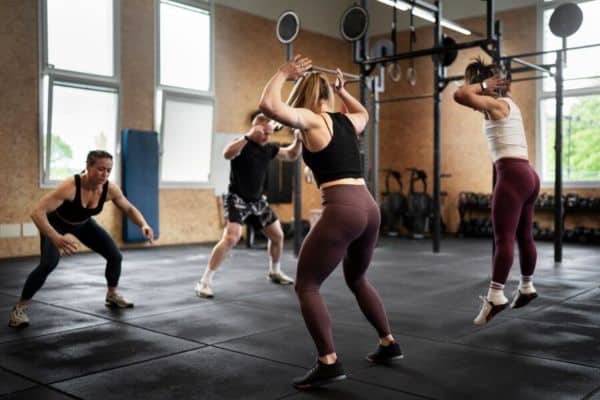In the bustling community of Collingwood, where health and fitness are highly valued, it’s no surprise that High-Intensity Interval Training (HIIT) has gained popularity as a go-to workout option. However, while HIIT undoubtedly has its benefits, it may not be the most suitable training option for everyone, especially when it comes to achieving long-term fitness goals. In this blog post, we’ll explore why HIIT might not be the best fit for you and provide alternative solutions to help you achieve your desired results.
Understanding the HIIT Hype
Before we delve into the reasons why HIIT might not be ideal for everyone, let’s first understand why it has become so popular:
- Efficiency: HIIT workouts are known for their time efficiency, allowing individuals to achieve a high-calorie burn with cardiovascular benefits in a short amount of time. However, there are much better ways to improve cardiovascular health.
- Metabolic Boost: HIIT has been touted for its ability to boost metabolism and promote fat loss both during and after exercise, making it appealing for weight management goals. The truth is, that the amount of calories burned after a workout is insignificant.
- Variety: HIIT workouts can be tailored to suit various fitness levels and preferences, with endless variations and combinations of exercises. I can’t speak for every HIIT class in the world, but I doubt there is much “tailoring” involved with the classes.

The Downside of HIIT
While HIIT may offer undeniable benefits, it’s important to recognise its limitations and potential drawbacks:
- Compliance and Sustainability:
HIIT workouts can be physically demanding and mentally taxing, leading to lower compliance rates and burnout over time, especially for beginners or individuals with busy lifestyles. - Increased Stress Levels:
HIIT places significant stress on the body, both physically and psychologically, which can exacerbate existing stress levels and potentially lead to overtraining syndrome or injury. - Risk of Injury:
The high intensity and repetitive nature of HIIT exercises increase the risk of injury, particularly for individuals with joint issues, muscular imbalances, or poor movement mechanics. - Mismatched Goals:
HIIT may not align with everyone’s health and fitness goals, especially if the primary focus is on improving strength, endurance, or overall well-being rather than maximising calorie burn. - Inadequate Recovery:
HIIT workouts require adequate recovery time to allow the body to repair and adapt, which may be compromised if individuals are participating in frequent high-intensity sessions without sufficient rest.

Alternative Training Strategies
Instead of solely relying on HIIT, consider incorporating the following strategies into your fitness routine to achieve balanced and sustainable results:
- Strength Training:
Prioritise resistance training to build muscle, improve metabolic health, and enhance overall strength and endurance. - Endurance Training:
Incorporate low to moderate-intensity cardio activities such as incline walking, cycling, or jogging to improve cardiovascular health and endurance without overstressing the body. - Mindful Movement:
Explore mindful movement practices such as yoga or Muay Thai to improve flexibility, balance, and mental well-being. - Periodisation:
Implement a periodised training approach that alternates between phases of high-intensity, moderate-intensity, and low-intensity workouts to optimise performance and prevent burnout. - Recovery Strategies:
Prioritise recovery with adequate rest, sleep, nutrition, and stress management techniques to support overall health and fitness goals.
In conclusion, while HIIT has its time and place in the fitness world, it may not be the best fit for everyone, especially for many of the individuals we see in the Collingwood community who prioritise long-term health and well-being over short-term intense workouts. By considering factors such as compliance, stress levels, injury risk, goal alignment, and recovery needs, you can make informed decisions about your training approach and achieve sustainable results that support your overall health and fitness journey.
Helpful Tip: Listen to your body, honour your individual needs, and choose a training approach that aligns with your goals, preferences, and lifestyle. Remember, fitness is not a one-size-fits-all solution, and finding what works best for you is key to long-term success.
For more fantastic health and fitness inspired articles please visit Beyond Best Personal Training’s BLOG.
Talk to us today about how we can structure a program to suit your goals and needs. Phone 0438 589 842 to speak with us today.




